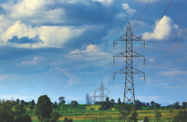Increased investment in import and distribution capacity should help Myanmar satisfy its growing appetite for liquefied petroleum gas (LPG), with the government looking to encourage usage of the fuel as part of plans to direct electricity towards industry.

On May 19 local energy firm Elite Petrochemical inaugurated the first stage of a $128m LPG import and distribution facility in the Thilawa Special Economic Zone, located 25 km south of Yangon.
The terminal and hub, developed under a build-operate-transfer model, includes a jetty for cargo handling and a 3000-tonne storage tank farm.
The second stage, currently under construction, will expand storage capacity to 25,000 tonnes of LPG and up to 100,000 tonnes of other fuel products.
The development is Myanmar’s first private sector LPG processing, handling and infrastructure facility, and follows increased activity by private players in recent months to invest in LPG infrastructure.
In August last year local firm Parami Energy Group became the first private company to lease state-owned LPG facilities, securing a MMK6.5bn ($4.9m) tender from the Ministry of Electricity and Energy (MoEE) for a jetty, terminal and storage facility at the Thanlyin refinery in the Yangon Region. The facility is expected to handle between 8000 and 10,000 tonnes of LPG per month once ongoing upgrades are completed.
This was followed by the announcement in April that Asia AVA Gas was in the early stages of developing an LPG import, storage and distribution centre at Bogyoke, Thalyin district, via a joint venture with the state-owned Myanma Petrochemical Enterprise (MPE). The $60m project will create a storage capacity of 12,000 tonnes, as well as jetties for unloading carriers and a gas-filling plant. The facility is expected to be operational early next decade.
Power policy seeks to free up electricity for industrial use
The developments dovetail with government efforts to expand marine imports of LPG to satisfy rising demand.
With local output of the fuel currently accounting for less than 10% of consumption, the bulk of existing domestic LPG demand is imported from Thailand, Malaysia and Indonesia, and until recently was carried into the country by truck.
While LPG consumption is still considerably lower than in neighbouring countries – estimated to be around 40 times less than in Thailand – the supply-demand imbalance is expected to rise further in line with government policy. The MoEE aims to replace electricity with LPG as the main energy source for household cooking, and in March announced that it intends to supply 1.5m households with LPG by 2020, up from just 150,000 last year, according to media reports.
With total power consumption forecast to increase by 15% each year to 4351 MW by FY 2021/22, and total generation capacity at just under 3200 MW, greater utilisation of LPG could ease pressure on the grid and free up more power for industry.
“There is a lot of demand to be met,” Ken Tun, CEO of oil and gas services company Parami Energy, told OBG. “It is estimated that LPG penetration in households is 3%, and in most rural areas it is still common to see people cooking with charcoal.”
Enhancing supply chain and safety standards key to expanding LPG
While foreign investment in LPG is increasing, closing gaps at different points in the supply chain will be key to expanding its usage and achieving the government’s power targets. In particular, Myanmar has a significant deficit in storage and trans-shipment facilities, along with modern filling points to transfer the fuel from large depots to smaller cylinders for retail.
Furthermore, the push to increase LPG uptake in more remote areas will require specialised tankers to reach the country’s hinterland, a logistical challenge expected to be met by suppliers.
To help meet these infrastructure demands, MPE recently licensed 15 new privately operated filling stations across the country, and granted approval to some 600 companies to either use LPG or operate in the segment.
Efforts are also being made to establish internationally recognised safety standards, seen as crucial to ensuring continuing foreign investment in the industry. MPE is working to develop regulations for the LPG industry under the Petroleum and Petroleum Products Law, which was released last August.


